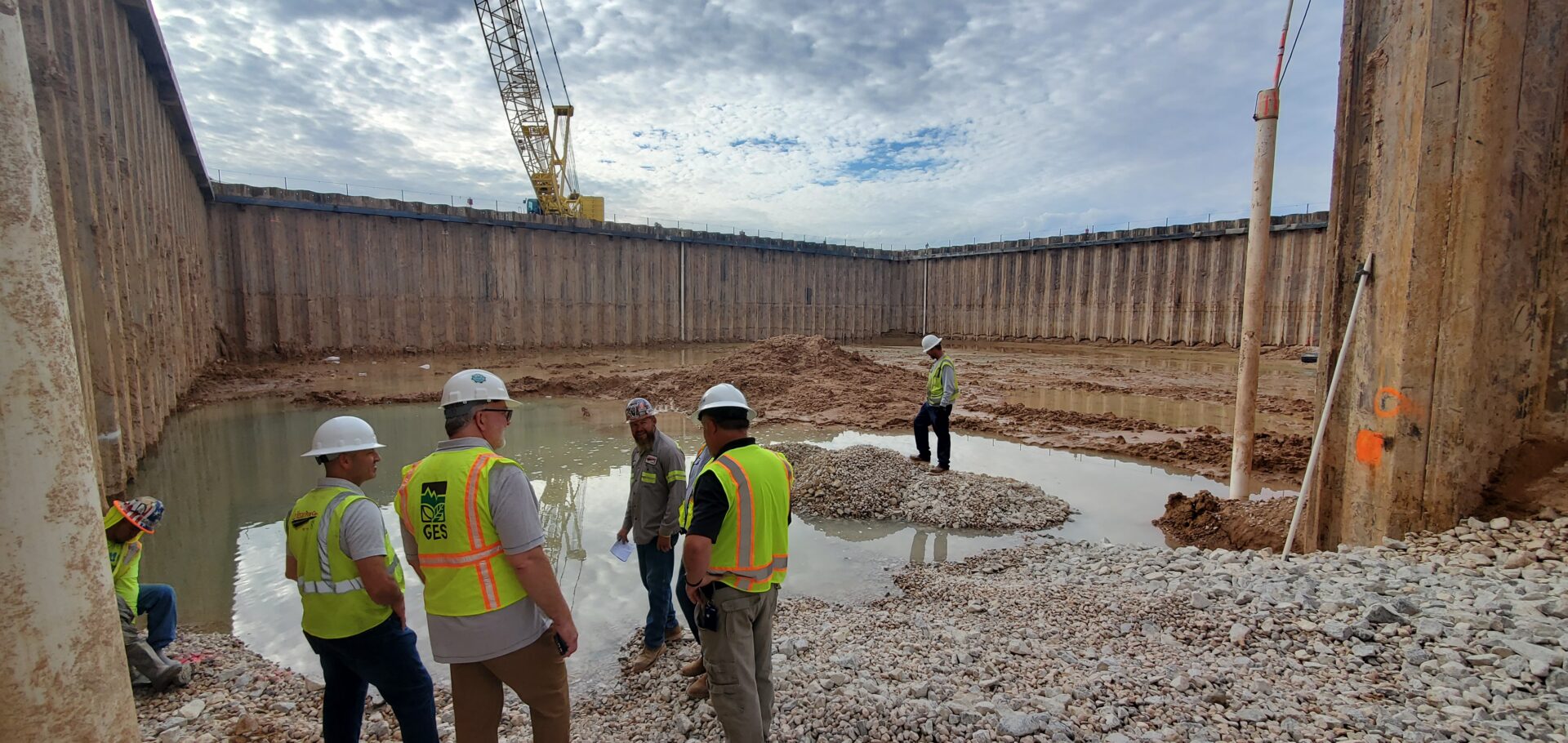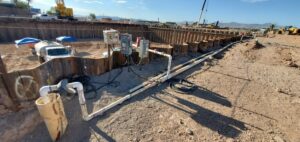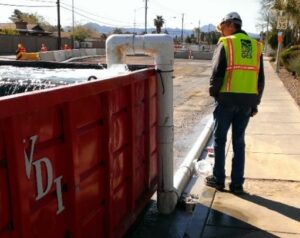Many larger buildings have deep foundations extending well below the water table, and dewatering is a way of life. A dewatering system can be straight forward, comprised of pumping the groundwater before it breaches the foundation and discharging the intercepted groundwater into a receiving structure, often via the Clark County storm drain system which leads to the Las Vegas Wash.
The process doesn’t come without its share of red tape in the form of a National Pollutant Discharge Elimination System (NPDES) permit obtained from the Nevada Division of Environmental Protection (NDEP) requiring periodic influent and effluent water quality monitoring. In addition, when temporary construction dewatering discharges water volumes exceeding 250 gallons per minute (gpm), and/or where water quality doesn’t meet pre-defined de minimus standards, a NPDES permit may also be required. After all, we can’t take water known to have pollutants and release it into our streams and washes where it could harm the ecosystem and eventually make its way into our drinking water.
Except on tribal lands, in Nevada permits are issued by the Nevada Division of Environmental Protection. Among other steps, Permit Procurement and Compliance typically includes.
- Need for the permit to be renewed periodically
- Determination of the type of permit required
- Preparation of an Operations and Maintenance Manual
- Determination of constituents of concern (e.g. benzene, perchlorate, etc.)
- Flow rate limitations and monitoring
- Monthly flow limitations
- Constituent concentration limitations
- Timely sample collection
- Transport of samples to an accredited laboratory
- Analysis of the results
- Determination of compliance
- Evaluation of unexpected results
- Timely submittal of reports/upload of results
And, depending on the permit specifications, most of this occurs on a quarterly basis! Annual reporting of additional constituents is also common.
To complicate matters, we’ve seen cases where unexpected petroleum hydrocarbons were detected, even after several years of monitoring with compliant results. We’ve also seen cases where naturally occurring constituents, such as selenium, have been detected above permit limits. Should the monitoring results indicate unexpected contaminants or results that
exceed certain limitations, the property owner/permit holder must remedy the situation. Typically, this requires treating the water before it is discharged.
We can help!
Third party sampling and
testing ensures highly trained experts perform the functions necessary to ensure quality test
results, with less chance of sample contamination.
Do you need help procuring a dewatering discharge permit or need sampling and reporting for the Nevada Division of Environmental Protection? Give us a call.




